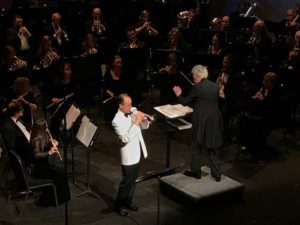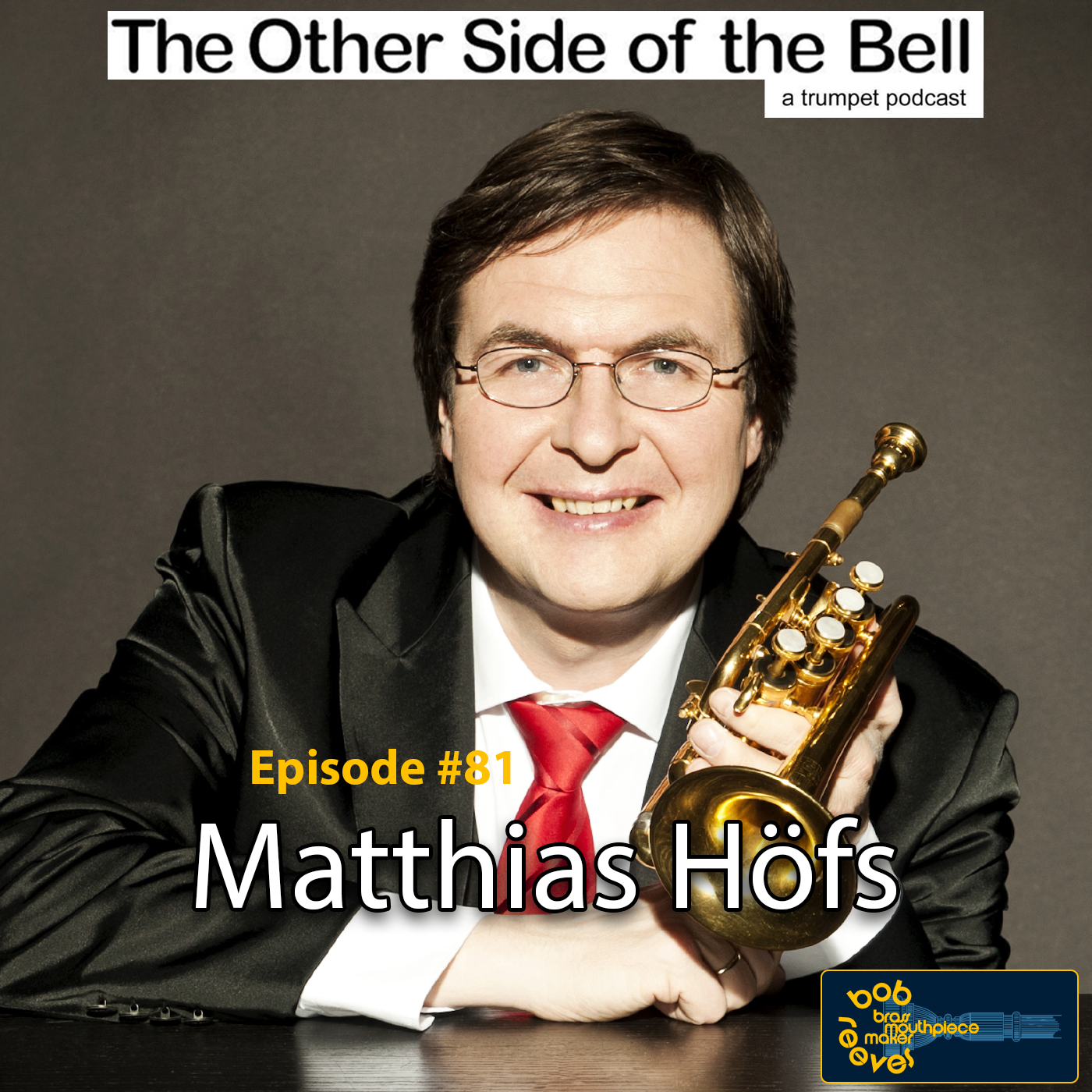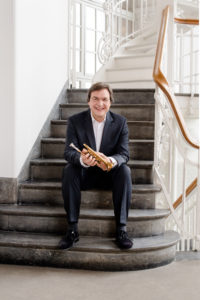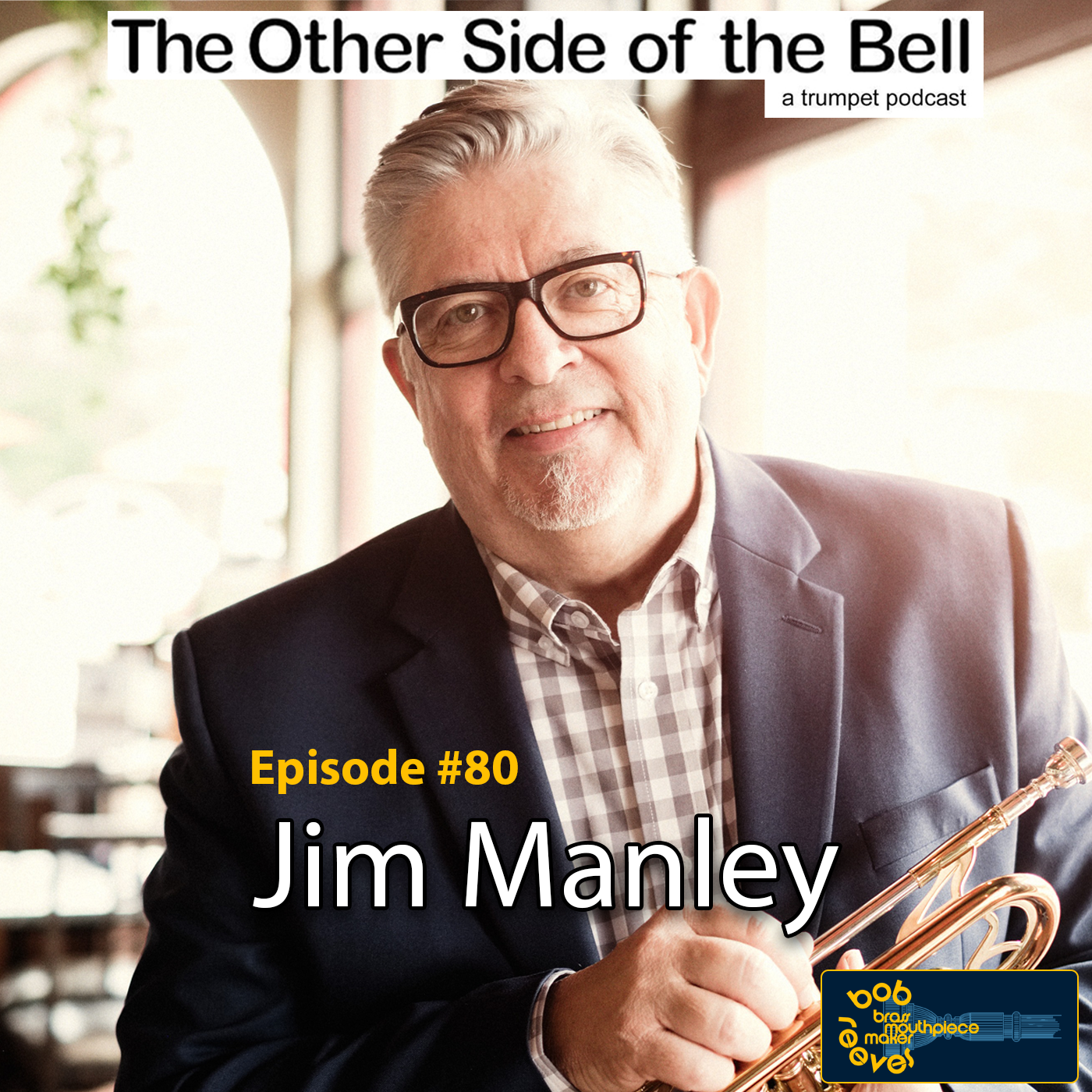Steve Dillard Trumpet Interview

Welcome to the show notes for Episode #87 of The Other Side of the Bell – A Trumpet Podcast. This episode features trumpeter and founder of the HornTrader website, Steve Dillard.
Listen to or download the episode below:
Podcast: Play in new window | Download
About Steve Dillard
 HornTrader.com 1st hit the World Wide Web in 1998. Owned and operated by Steve Dillard, the HornTrader Web site was the first of its kind and still the best site to find quality horns, related gear, and information for the discerning trumpeter.
HornTrader.com 1st hit the World Wide Web in 1998. Owned and operated by Steve Dillard, the HornTrader Web site was the first of its kind and still the best site to find quality horns, related gear, and information for the discerning trumpeter.Steve brings extensive professional experience to HornTrader.com. Not only has he spent many years in the trumpet manufacturing industry working with Benge and Calicchio, he is also a very active freelance trumpet player and teacher.
As an apprentice to Dominic Calicchio, Steve learned the fine art of brass craftsmanship with hands on experience. At Benge under Zig Kanstul, Steve had many jobs including slide maker, quality controller and shipper.
Throughout the years, he’s stayed well informed in the industry both through his association with top leaders of brass technology such as Zig Kanstal, Bob Reeves, Schilke, Conn Selmer, CarolBrass and his relationships with highly regarded leaders in trumpet performance like Wayne Bergeron (LA Studios), Boyde Hood (LA Phil) as well as the many fine trumpet players Steve has met around the globe. Steve has always had a penchant for retail and at one time was the largest distributor of Reunion Blues gig bags in Southern California.
Since owning and operating HornTrader.com he has come to be one of the primary sellers of Professional pre-owned and vintage horns on the internet. He is well known in many countries throughout the world and his site is visited by thousands each month.
Steve’s first love has always been playing trumpet. He maintains a busy playing / teaching schedule and has had a professional performance career spanning over 40 years. One of the first to teach on line using SKYPE, and YouTube, Steve has been able spread his knowledge and love of the trumpet the world over. His teaching mantra “I believe I can help YOU,” recorded in January 2012, can be seen on YouTube.
 Besides everything trumpet Steve”s passions are marathon open water (OCEAN) swimming, and the daunting task of traing his dog Dingoe. He currently resides in San Diego, California, USA, with his wife and two children where he manages HornTrader.com. In 2019 Steve Opened his very 1st “Brick & Mortar” Shop. HT HQ is in the heart of San Diego, is close to all major attractions and forms of public transportation.
Besides everything trumpet Steve”s passions are marathon open water (OCEAN) swimming, and the daunting task of traing his dog Dingoe. He currently resides in San Diego, California, USA, with his wife and two children where he manages HornTrader.com. In 2019 Steve Opened his very 1st “Brick & Mortar” Shop. HT HQ is in the heart of San Diego, is close to all major attractions and forms of public transportation.
Steve Dillard Links
Podcast Credits
- “A Room with a View“ – composed and performed by Howie Shear
- Audio Engineer – Preston Shepard at SC Sound Labs
- Cover Art – Phil Jordan
- Podcast Host – John Snell





 Born in Lancashire, England and raised in Perth, Western Australia, Adrian Kelly began playing trumpet at the age of six. He has gone on to build an international career as a multi-faceted musician; performing, recording, and writing pop, classical, and jazz music. Adrian is currently engaged in PhD research at Edith Cowan University (Perth, Western Australia). He has served on the board of the Australian Trumpet Guild since 2019, and on the board of JazzWA since 2018.
Born in Lancashire, England and raised in Perth, Western Australia, Adrian Kelly began playing trumpet at the age of six. He has gone on to build an international career as a multi-faceted musician; performing, recording, and writing pop, classical, and jazz music. Adrian is currently engaged in PhD research at Edith Cowan University (Perth, Western Australia). He has served on the board of the Australian Trumpet Guild since 2019, and on the board of JazzWA since 2018. 2020 sees the release of two releases: Visions a suite of pieces for improvising quartet written to accompany the visual art of Robert John Kelly (Adrian’s father), and Cry, “Wolf!” an album of music featuring an artificial intelligence ‘improviser’ along with an electric jazz quartet. All of Adrian’s music is available through iTunes and other digital platforms, and through links provided on his website.
2020 sees the release of two releases: Visions a suite of pieces for improvising quartet written to accompany the visual art of Robert John Kelly (Adrian’s father), and Cry, “Wolf!” an album of music featuring an artificial intelligence ‘improviser’ along with an electric jazz quartet. All of Adrian’s music is available through iTunes and other digital platforms, and through links provided on his website. Adrian has delivered classes in jazz music and trumpet at Edith Cowan University, The University of Western Australia (Australia), and the Hong Kong Institute of Education (China). He has presented masterclasses to students at Lasalle College (Singapore), the Hong Kong Institute of Education, ShangHai Conservatory of Music, XingHai University, and Harbin Teacher Training College (China), and at independent venues in
Adrian has delivered classes in jazz music and trumpet at Edith Cowan University, The University of Western Australia (Australia), and the Hong Kong Institute of Education (China). He has presented masterclasses to students at Lasalle College (Singapore), the Hong Kong Institute of Education, ShangHai Conservatory of Music, XingHai University, and Harbin Teacher Training College (China), and at independent venues in
 Simon Sweeney is a professional trumpet player and educator based in Sydney. He holds a Bachelors and a Masters degree from the Sydney Conservatorium of Music. He is a studio musician and has been prolific in the live music scene since 1993. As a member of the Jazz Faculty at the Sydney Conservatorium of Music since 2010 he has taught many of the young players currently working in the Sydney scene.
Simon Sweeney is a professional trumpet player and educator based in Sydney. He holds a Bachelors and a Masters degree from the Sydney Conservatorium of Music. He is a studio musician and has been prolific in the live music scene since 1993. As a member of the Jazz Faculty at the Sydney Conservatorium of Music since 2010 he has taught many of the young players currently working in the Sydney scene.
 Daniel Falcone began working professionally in Las Vegas at age 15. The son of Vincent Falcone, musical director, pianist and conductor for Frank Sinatra, he literally grew up on stage. Starting in high school, Daniel backed the likes of Tony Bennett, Rita Moreno, Jerry Lewis, George Burns, Andy Williams, Jack Jones, Paul Anka and many other headliners on the Las Vegas Strip.
Daniel Falcone began working professionally in Las Vegas at age 15. The son of Vincent Falcone, musical director, pianist and conductor for Frank Sinatra, he literally grew up on stage. Starting in high school, Daniel backed the likes of Tony Bennett, Rita Moreno, Jerry Lewis, George Burns, Andy Williams, Jack Jones, Paul Anka and many other headliners on the Las Vegas Strip.


 Morris Northcutt’s playing has been described as artistic, lyrical and expressive with a beautiful, smooth, and rich tone.
Morris Northcutt’s playing has been described as artistic, lyrical and expressive with a beautiful, smooth, and rich tone. n 2019, Morris completed a solo recital/masterclass tour of Ireland that included an appearance at the Royal Irish Academy of Music. This past January, he appeared at the 2020 Sao Paulo Trumpet Academy in Brazil. Later this year, Morris will debut his first EP, produced and engineered by Latin Grammy Award winner Danilo Alvarez with arrangements by Justo Morao.
n 2019, Morris completed a solo recital/masterclass tour of Ireland that included an appearance at the Royal Irish Academy of Music. This past January, he appeared at the 2020 Sao Paulo Trumpet Academy in Brazil. Later this year, Morris will debut his first EP, produced and engineered by Latin Grammy Award winner Danilo Alvarez with arrangements by Justo Morao.
 Dr. Karl Sievers enjoys a successful and varied performance career, having performed in countless studio sessions, on live television, in jazz ensembles, chamber music of all kinds, solo recitals, and in symphony orchestras.
Dr. Karl Sievers enjoys a successful and varied performance career, having performed in countless studio sessions, on live television, in jazz ensembles, chamber music of all kinds, solo recitals, and in symphony orchestras. A student of William Adam at Indiana University, Karl has been instrumental in hosting and organizing the International William Adam Trumpet Festival. The 6th Annual festival will be from June 18-20, 2020 and held online on the the Bill Adam Facebook Group, where all the masterclasses will be available to view free of charge.
A student of William Adam at Indiana University, Karl has been instrumental in hosting and organizing the International William Adam Trumpet Festival. The 6th Annual festival will be from June 18-20, 2020 and held online on the the Bill Adam Facebook Group, where all the masterclasses will be available to view free of charge.
 When he was six years old, Matthias Hoefs declared the trumpet “his instrument, because it shines so nicely”. He received his musical education from Professor Peter Kallensee at the Hamburg University of Music and Theatre, and from Profes- sor Konradin Groth at the Karajan Academy of the Berlin Philharmonic Orchestra. When just 18 years of age, he was engaged as Solo-Trumpeter at the Philharmonic State Orchestra in Hamburg, where he enjoyed the fascinating world of opera for 16 years.
When he was six years old, Matthias Hoefs declared the trumpet “his instrument, because it shines so nicely”. He received his musical education from Professor Peter Kallensee at the Hamburg University of Music and Theatre, and from Profes- sor Konradin Groth at the Karajan Academy of the Berlin Philharmonic Orchestra. When just 18 years of age, he was engaged as Solo-Trumpeter at the Philharmonic State Orchestra in Hamburg, where he enjoyed the fascinating world of opera for 16 years. Since the year 2000, Matthias Hoefs has been teaching as Professor at the Hamburg University of Music and Theatre, were he inspires his students with great enthusiasm, knowing how to pass on his passion for his instrument. In addition to his extensive concert performances as solo-trumpeter and chamber musician, Hoefs has produced numerous Solo CDs, and jointly with GERMAN BRASS, more than 20 recordings.
Since the year 2000, Matthias Hoefs has been teaching as Professor at the Hamburg University of Music and Theatre, were he inspires his students with great enthusiasm, knowing how to pass on his passion for his instrument. In addition to his extensive concert performances as solo-trumpeter and chamber musician, Hoefs has produced numerous Solo CDs, and jointly with GERMAN BRASS, more than 20 recordings.
 Jim Manley figures he has spent around 10,500 plus nights playing his trumpet around town in his hometown of St. Louis since the 70’s.
Jim Manley figures he has spent around 10,500 plus nights playing his trumpet around town in his hometown of St. Louis since the 70’s.



 Honesty Pill founder Christopher Still joined the Los Angeles Philharmonic as Second Trumpet in 2007.
Honesty Pill founder Christopher Still joined the Los Angeles Philharmonic as Second Trumpet in 2007.
 David Elton is recognised as one of the world’s most sought-after trumpet players.
David Elton is recognised as one of the world’s most sought-after trumpet players. David is an active chamber musician, most recently giving the world premiere of David Sampson’s Memories to Keep Awhile at the Australian Festival of Chamber Music. He is a founding member of the Australian Brass Quintet with whom he regularly tours throughout Australia and beyond.
David is an active chamber musician, most recently giving the world premiere of David Sampson’s Memories to Keep Awhile at the Australian Festival of Chamber Music. He is a founding member of the Australian Brass Quintet with whom he regularly tours throughout Australia and beyond.
 Originally from Portland Oregon, Gary Guthman started his career at the age of nine. As a young teen, Gary was a member of the nationally acclaimed “Seldom Six” Dixieland Band, comprised of 12 to 14 years old who traveled the United States performing stage shows and conventions, playing, singing and tap-dancing all the way. Throughout Gary’s high school and college years, he performed with jazz and rock and roll bands and at 17 years old, auditioned for the acclaimed Portland (Oregon) Youth Orchestra; the oldest of its kind in the United States.
Originally from Portland Oregon, Gary Guthman started his career at the age of nine. As a young teen, Gary was a member of the nationally acclaimed “Seldom Six” Dixieland Band, comprised of 12 to 14 years old who traveled the United States performing stage shows and conventions, playing, singing and tap-dancing all the way. Throughout Gary’s high school and college years, he performed with jazz and rock and roll bands and at 17 years old, auditioned for the acclaimed Portland (Oregon) Youth Orchestra; the oldest of its kind in the United States. Since moving to Central Europe, Gary has given hundreds of concerts with his “Gary Guthman Quartet” and “The New Swing Orchestra”, as well as Symphonic Pops concerts. In 2011, Gary released his next CD entitled “Solar Eclipse” on the Polski Radio Jazz Label, featuring his quartet of world-class Polish jazz artists Filip Wojciechowski/piano, Paweł Pańta/Bass, Cezary Konrad/Drums. Gary Guthman is the only non-Polish jazz artist to release his own CD in the 95-year history of Polish Radio. In 2014, along with his co-writer Doman Nowakowski, Gary composed the Libretto, Music and Lyrics for a new musical entitled “Letter from Warsaw”.
Since moving to Central Europe, Gary has given hundreds of concerts with his “Gary Guthman Quartet” and “The New Swing Orchestra”, as well as Symphonic Pops concerts. In 2011, Gary released his next CD entitled “Solar Eclipse” on the Polski Radio Jazz Label, featuring his quartet of world-class Polish jazz artists Filip Wojciechowski/piano, Paweł Pańta/Bass, Cezary Konrad/Drums. Gary Guthman is the only non-Polish jazz artist to release his own CD in the 95-year history of Polish Radio. In 2014, along with his co-writer Doman Nowakowski, Gary composed the Libretto, Music and Lyrics for a new musical entitled “Letter from Warsaw”.